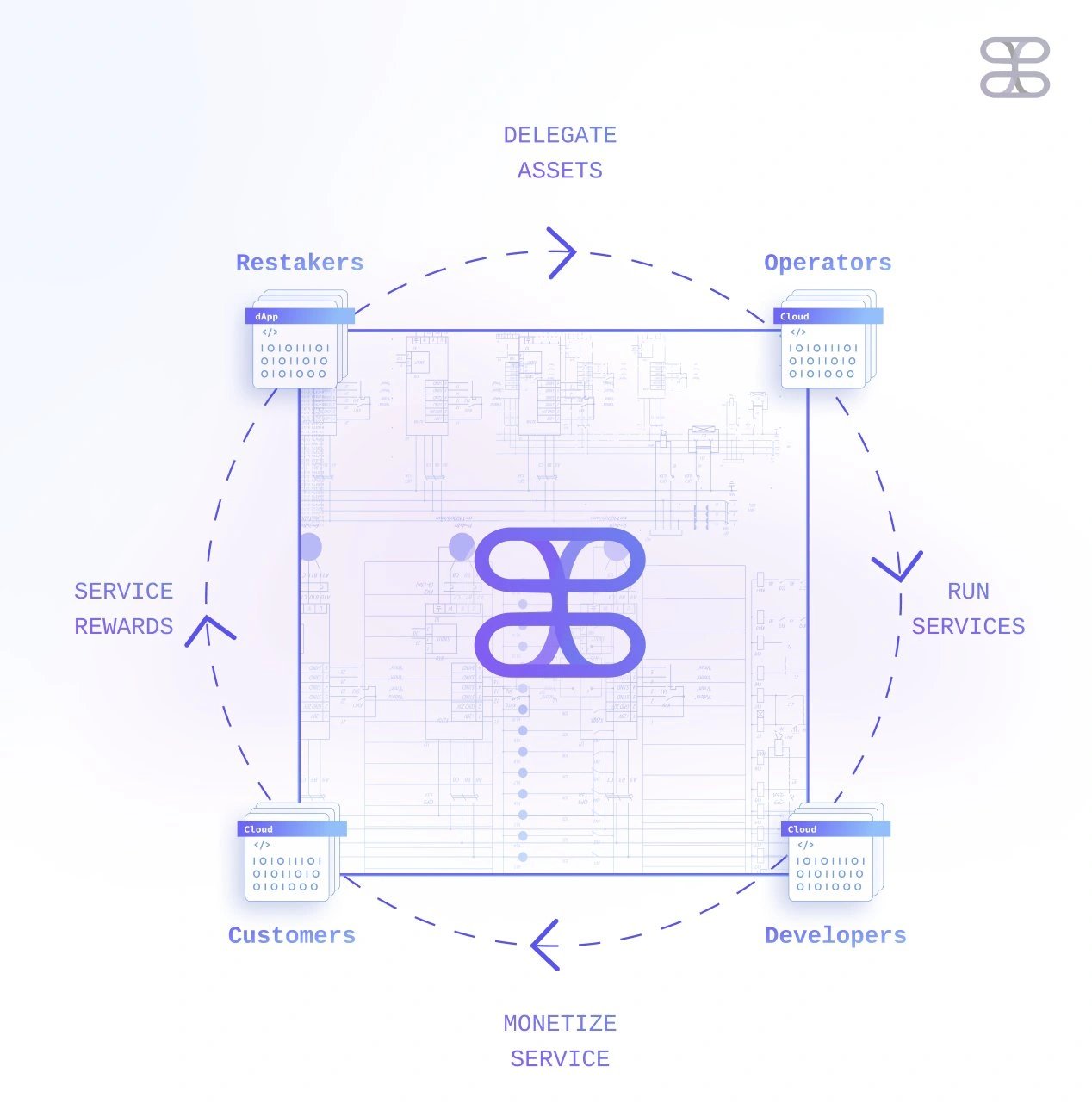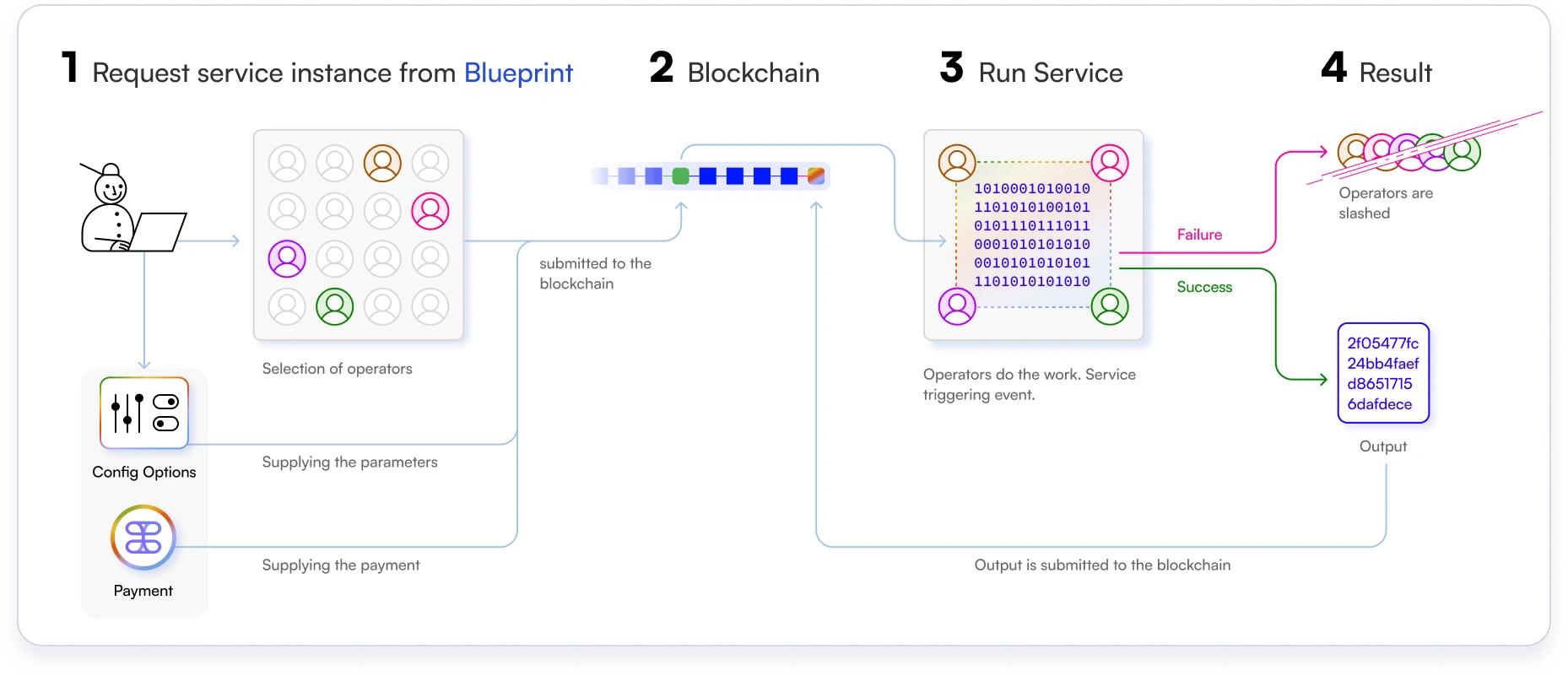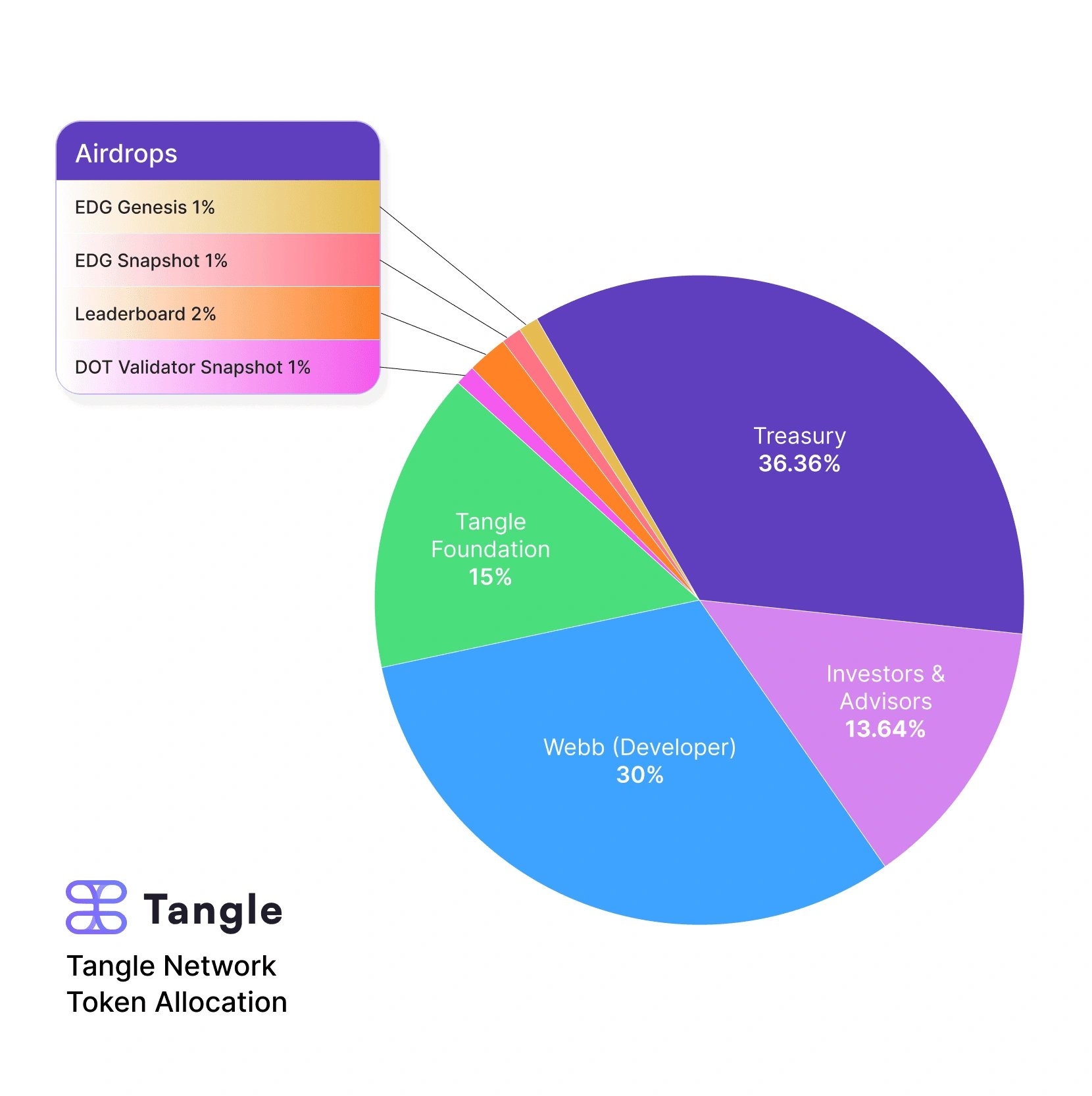订阅 wiki
Share wiki
Bookmark
Tangle Network
Tangle Network
Tangle Network 是一个区块链平台,提供安全、去中心化的基础设施服务。它作为一个由开发者及其社区管理的去中心化云基础设施运作。该平台结合了先进的密码学技术和重新质押机制,从而能够在安全、去中心化的框架内开发创新解决方案。[1]
概述
Tangle Network 是一个区块链平台,提供去中心化的基础设施服务,专注于安全性和模块化。其架构允许开发者构建和组合服务组件或蓝图,用于预言机、桥和零知识解决方案等应用程序。重新质押模型通过奖励开发者创建有用的蓝图和运营商质押资产以保护服务来激励贡献。主要功能包括用于密码学和验证器支持的主动验证服务 (AVS)、使用可替代资产保护基础设施的无需许可的重新质押、通过 MPC 桥和 XCM 等技术实现互操作性,以及与基于 Ethereum 的工具和应用程序无缝集成的 EVM 兼容性。[2]

特点
蓝图
Tangle Network 上的蓝图定义了主动验证服务 (AVS) 或实例的规范。开发者使用 Gadget SDK 创建部署在网络上的蓝图。然后,用户可以创建这些蓝图的实例,由 Tangle 运营商运营。运营商因开具发票和执行而获得 TNT 代币和费用奖励,而开发者可以在蓝图中指定额外的激励措施以鼓励运营商参与。
蓝图实例专为可重复使用的计算服务而设计,可以运行不同的持续时间(由用户或开发者指定),并由不同的运营商和重新质押的资产保护。每个蓝图都包含一个程序二进制文件和智能合约,用于输出验证和故障管理,并指定其执行环境,例如本机、虚拟机或容器化设置。Gadget SDK 还支持直接在 Eigenlayer 上构建 AVS,使开发者能够在利用 SDK 功能的同时测试和改进服务。[3]

激励
Tangle Network 提供了一个软件货币化平台,允许开发者将软件部署为蓝图,并通过使用费和奖励产生收入。当客户实例化蓝图时,费用将在开发者 (50%)、运营商和重新质押者 (30%) 以及 Tangle 协议金库 (20%) 之间分配,从而确保平衡的激励措施和平台可持续性。该网络依赖于三个核心经济机制:交易费用、权益证明奖励和重新质押激励。TNT 是交易的主要资产,包括 EVM 执行和蓝图操作,并提供初始费用补贴以鼓励采用。指定的权益证明共识机制奖励验证器和提名者,网络参与者的 APY 约为 4-5%。重新质押系统允许通过 TNT 存款和运营商维护蓝图实例的基于绩效的奖励来获得收益。开发者可以增强安全性并自定义费用分配,同时与协议的经济结构保持一致。[4]
质押
Tangle 的质押基础设施包括三个组件:用于选择验证器的基本指定权益证明 (nPoS) 机制、支持验证器特定的质押和流动性质押代币 (LST) 的原生流动性质押协议,以及利用各种资产(包括 LST)的 Tangle 蓝图的共享安全重新质押系统。[5]
- 指定质押: nPoS 系统允许用户在验证器上质押 TNT,以保护网络并生成区块。验证器必须遵守共识规则,如果失败,则面临削减风险。质押者根据其指定的质押比例获得奖励。此外,重新质押系统中的运营商必须是 Tangle 验证器,并且具有最低指定的质押才能注册蓝图和处理服务请求。
- 重新质押: 重新质押使 Tangle 上或桥接到 Tangle 的任何资产(包括流动性质押代币 (LST))都可以用作保护按需服务实例的抵押品。重新质押的资产存入池中,代表单个资产或篮子,并根据服务使用情况集体获得奖励。用户将其质押的资产委托给提供共享安全的运营商。运营商的不当行为或服务故障可能导致削减。
- 流动性质押: Tangle 开发流动性质押协议,该协议生成唯一的 LST,由“tg...”等前缀标识,用于特定的质押操作,例如验证器或金库特定的操作。这些代币在不同的操作中不可替代,并且可以在重新质押系统中实现定义明确的池。这种结构通过创造利用这些质押资产的新机会来支持验证器、节点运营商和金库。
TNT
Tangle Network 的原生代币 TNT 用作gas代币、支付媒介以及蓝图和重新质押服务的主要重新质押资产。在其指定的权益证明 (nPoS)共识机制下,验证器质押 TNT 以验证区块。同时,提名者可以将 TNT 委托给验证器,以分享奖励并提高其质押代币。铸造和销毁 TNT 的动态机制支持验证器和提名者奖励、金库资金、通货膨胀管理和经济稳定性。在重新质押系统中,TNT 促进了作业提交者和验证器之间安全高效的计算服务交互。该代币还支持削减协议,以阻止恶意行为并强制遵守网络规则。此外,TNT 授予持有者治理权,使他们能够通过公民投票参与决策,并确保网络的发展与社区优先事项保持一致。[6]
代币经济学

TNT 的总供应量为 1 亿,分配如下:[7]
- 金库:36.36%
- Webb(开发者):30%
- Tangle 基金会:15%
- 投资者/顾问:13.64%
- 排行榜:2%
- EDG Genesis:1%
- EDG 快照:1%
- DOT 验证器快照:1%
治理
Tangle 链上治理允许代币持有者参与网络升级和协议演进的决策过程。治理角色包括由代币持有者选举产生的理事会,该理事会提出公民投票、否决有害提案并代表不太活跃的参与者。代币持有者可以对公民投票进行投票、提出变更并选举理事会成员。该系统使用自适应法定人数偏差,根据选民投票率调整提案阈值,并确保公平代表性。治理支持去中心化协议升级,包括运行时更改,而无需硬分叉,从而保持持续的网络功能。[8]
合作伙伴
- Hyperlane
- Webb
- Lemniscap
- Eigenlayer
- Polychain Capital
- Level
- Biconomy
- Orochi
- Glacis
- Sabiler
- Envio
- Router Protocol
- Den
- Sygma
发现错误了吗?
